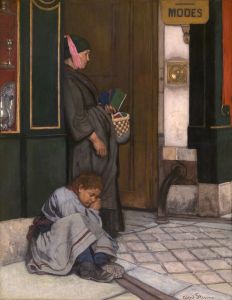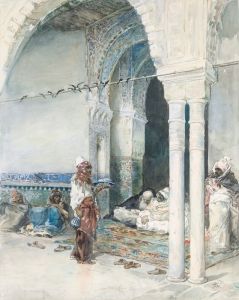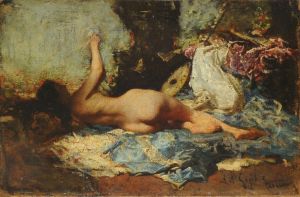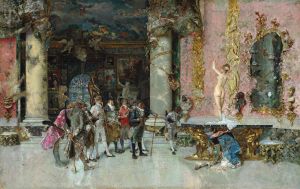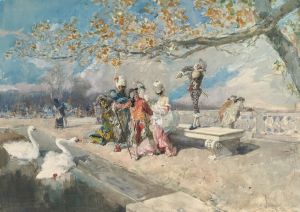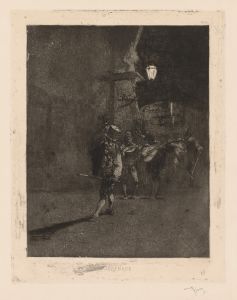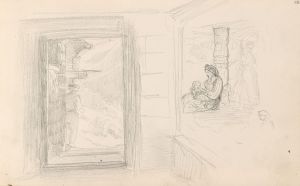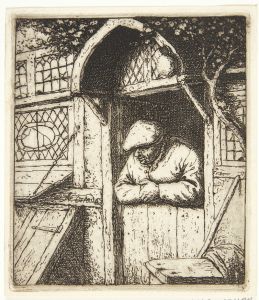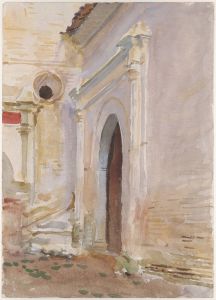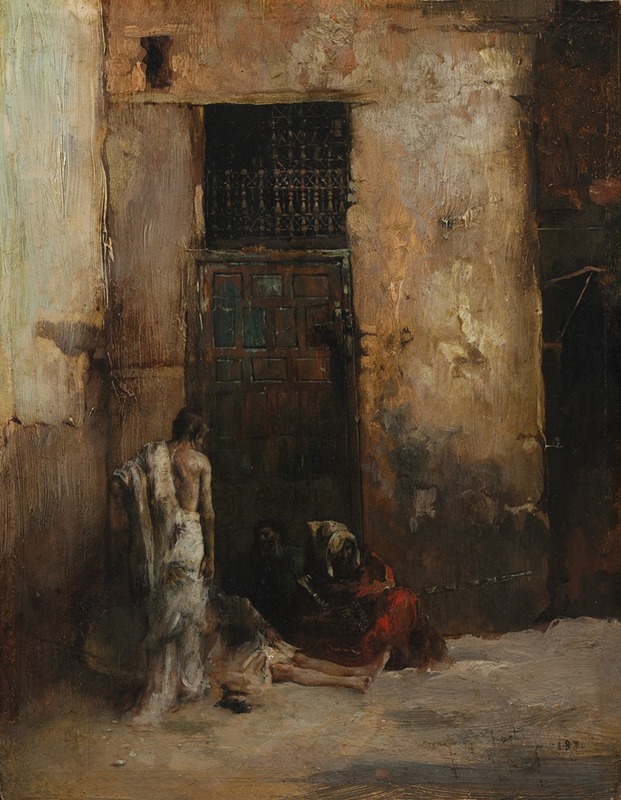
Beggars by a Door
A hand-painted replica of Mariano Fortuny Marsal’s masterpiece Beggars by a Door, meticulously crafted by professional artists to capture the true essence of the original. Each piece is created with museum-quality canvas and rare mineral pigments, carefully painted by experienced artists with delicate brushstrokes and rich, layered colors to perfectly recreate the texture of the original artwork. Unlike machine-printed reproductions, this hand-painted version brings the painting to life, infused with the artist’s emotions and skill in every stroke. Whether for personal collection or home decoration, it instantly elevates the artistic atmosphere of any space.
Mariano Fortuny Marsal, a prominent Spanish painter of the 19th century, is known for his detailed and evocative works that often depict scenes from everyday life. One of his notable paintings is "Beggars by a Door," which exemplifies his skill in capturing the nuances of human emotion and social conditions.
"Beggars by a Door" is a genre painting, a style that Fortuny Marsal excelled in, which focuses on scenes from ordinary life. This particular work portrays a group of beggars gathered near a doorway, a common sight in many European cities during the 19th century. The painting is a testament to Fortuny's ability to blend realism with a compassionate portrayal of his subjects, highlighting the plight of the less fortunate in society.
Fortuny Marsal was born in Reus, Catalonia, in 1838 and showed an early talent for art. He studied at the Academy of Fine Arts in Barcelona and later in Rome, where he was influenced by the works of the Renaissance and Baroque masters. His time in Rome was crucial in developing his style, which combined meticulous attention to detail with a vibrant use of color and light.
"Beggars by a Door" reflects Fortuny's interest in the human condition and his ability to convey complex emotions through his art. The painting is characterized by its realistic depiction of the figures, each with distinct expressions and postures that tell their own stories. Fortuny's use of light and shadow adds depth to the scene, drawing the viewer's attention to the central figures while also highlighting the textures of their worn clothing and the weathered doorway.
The composition of the painting is carefully balanced, with the figures arranged in a way that guides the viewer's eye across the canvas. Fortuny's attention to detail is evident in the intricate rendering of the beggars' faces and hands, as well as the subtle play of light on the surfaces around them. This attention to detail not only enhances the realism of the scene but also evokes empathy from the viewer, inviting them to consider the lives and struggles of the individuals depicted.
Fortuny's work, including "Beggars by a Door," was well-received during his lifetime, earning him recognition and acclaim across Europe. His paintings were exhibited in major cities, and he became one of the most sought-after artists of his time. Unfortunately, Fortuny's career was cut short by his untimely death in 1874 at the age of 36, but his legacy endures through his influential body of work.
Today, "Beggars by a Door" is appreciated not only for its artistic merit but also for its historical significance. It provides insight into the social realities of 19th-century Europe and reflects Fortuny's commitment to portraying the world around him with honesty and sensitivity. The painting remains a poignant reminder of the enduring power of art to capture and communicate the human experience.






